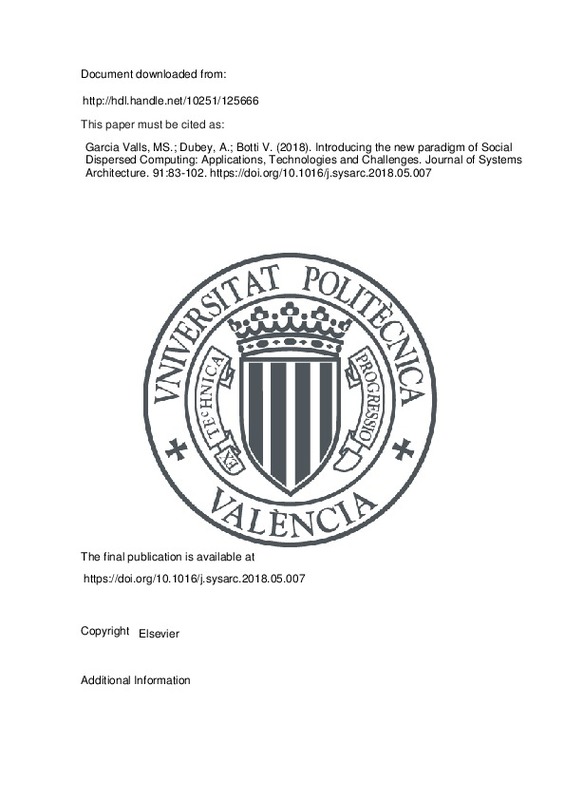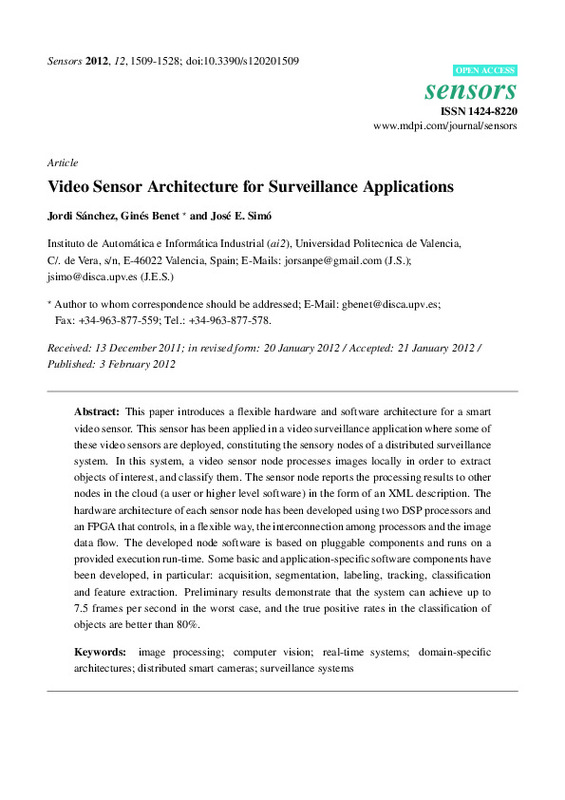JavaScript is disabled for your browser. Some features of this site may not work without it.
Buscar en RiuNet
Listar
Mi cuenta
Estadísticas
Ayuda RiuNet
Admin. UPV
Jaw tissues segmentation in dental 3D CT images using fuzzy-connectedness and morphological processing
Mostrar el registro sencillo del ítem
Ficheros en el ítem
| dc.contributor.author | Llorens Rodríguez, Roberto
|
es_ES |
| dc.contributor.author | Naranjo Ornedo, Valeriana
|
es_ES |
| dc.contributor.author | López-Mir, Fernando
|
es_ES |
| dc.contributor.author | Alcañiz Raya, Mariano Luis
|
es_ES |
| dc.date.accessioned | 2015-07-06T06:27:21Z | |
| dc.date.available | 2015-07-06T06:27:21Z | |
| dc.date.issued | 2012-11 | |
| dc.identifier.issn | 0169-2607 | |
| dc.identifier.issn | 1872-7565 | |
| dc.identifier.uri | http://hdl.handle.net/10251/52699 | |
| dc.description.abstract | The success of oral surgery is subject to accurate advanced planning. In order to properly plan for dental surgery or a suitable implant placement, it is necessary an accurate segmentation of the jaw tissues: the teeth, the cortical bone, the trabecular core and over all, the inferior alveolar nerve. This manuscript presents a new automatic method that is based on fuzzy connectedness object extraction and mathematical morphology processing. The method uses computed tomography data to extract different views of the jaw: a pseudo-orthopantomographic view to estimate the path of the nerve and cross-sectional views to segment the jaw tissues. The method has been tested in a groundtruth set consisting of more than 9000 cross-sections from 20 different patients and has been evaluated using four similarity indicators (the Jaccard index, Dice's coefficient, point-to-point and point-to-curve distances), achieving promising results in all of them (0.726 ± 0.031, 0.840 ± 0.019, 0.144 ± 0.023 mm and 0.163 ± 0.025 mm, respectively). The method has proven to be significantly automated and accurate, with errors around 5% (of the diameter of the nerve), and is easily integrable in current dental planning systems. © 2012 Elsevier Ireland Ltd. | es_ES |
| dc.description.sponsorship | This work has been supported by the project MIRACLE (DPI2007-66782-C03-01-AR07) of Spanish Ministerio de Educacion y Ciencia. | en_EN |
| dc.language | Inglés | es_ES |
| dc.publisher | Elsevier | es_ES |
| dc.relation.ispartof | Computer Methods and Programs in Biomedicine | es_ES |
| dc.rights | Reserva de todos los derechos | es_ES |
| dc.subject | Automatic computer-aided surgery | es_ES |
| dc.subject | Fuzzy connectedness | es_ES |
| dc.subject | Inferior alveolar nerve | es_ES |
| dc.subject | Jaw tissue segmentation/reconstruction | es_ES |
| dc.subject | Automatic method | es_ES |
| dc.subject | Computed tomography data | es_ES |
| dc.subject | Computer aided surgery | es_ES |
| dc.subject | Cortical bone | es_ES |
| dc.subject | CT Image | es_ES |
| dc.subject | Dental surgery | es_ES |
| dc.subject | Implant placement | es_ES |
| dc.subject | Jaccard index | es_ES |
| dc.subject | Morphological processing | es_ES |
| dc.subject | Object extraction | es_ES |
| dc.subject | Planning systems | es_ES |
| dc.subject | Tissue segmentation | es_ES |
| dc.subject | Fuzzy systems | es_ES |
| dc.subject | Histology | es_ES |
| dc.subject | Mathematical morphology | es_ES |
| dc.subject | Surgery | es_ES |
| dc.subject | Tissue | es_ES |
| dc.subject | Computerized tomography | es_ES |
| dc.subject | Accuracy | es_ES |
| dc.subject | Algorithm | es_ES |
| dc.subject | Article | es_ES |
| dc.subject | Automation | es_ES |
| dc.subject | Blood vessel diameter | es_ES |
| dc.subject | Clinical article | es_ES |
| dc.subject | Computer assisted tomography | es_ES |
| dc.subject | Dental procedure | es_ES |
| dc.subject | Fuzzy system | es_ES |
| dc.subject | Human | es_ES |
| dc.subject | Image processing | es_ES |
| dc.subject | Image reconstruction | es_ES |
| dc.subject | Jaw | es_ES |
| dc.subject | Mathematical computing | es_ES |
| dc.subject | Morphology | es_ES |
| dc.subject | Nerve | es_ES |
| dc.subject | Three dimensional imaging | es_ES |
| dc.subject.classification | TEORIA DE LA SEÑAL Y COMUNICACIONES | es_ES |
| dc.subject.classification | EXPRESION GRAFICA EN LA INGENIERIA | es_ES |
| dc.title | Jaw tissues segmentation in dental 3D CT images using fuzzy-connectedness and morphological processing | es_ES |
| dc.type | Artículo | es_ES |
| dc.identifier.doi | 10.1016/j.cmpb.2012.05.014 | |
| dc.relation.projectID | info:eu-repo/grantAgreement/MEC//DPI2007-66782-C03-01/ES/DESARROLLO DE UN SISTEMA AVANZADO DE DISEÑO, SIMULACION Y FABRICACION FLEXIBLE DE PROTESIS DENTALES IMPLANTOSOPORTADAS/ | es_ES |
| dc.rights.accessRights | Abierto | es_ES |
| dc.contributor.affiliation | Universitat Politècnica de València. Instituto Interuniversitario de Investigación en Bioingeniería y Tecnología Orientada al Ser Humano - Institut Interuniversitari d'Investigació en Bioenginyeria i Tecnologia Orientada a l'Ésser Humà | es_ES |
| dc.contributor.affiliation | Universitat Politècnica de València. Departamento de Comunicaciones - Departament de Comunicacions | es_ES |
| dc.contributor.affiliation | Universitat Politècnica de València. Departamento de Ingeniería Gráfica - Departament d'Enginyeria Gràfica | es_ES |
| dc.description.bibliographicCitation | Llorens Rodríguez, R.; Naranjo Ornedo, V.; López-Mir, F.; Alcañiz Raya, ML. (2012). Jaw tissues segmentation in dental 3D CT images using fuzzy-connectedness and morphological processing. Computer Methods and Programs in Biomedicine. 108(2):832-843. https://doi.org/10.1016/j.cmpb.2012.05.014 | es_ES |
| dc.description.accrualMethod | S | es_ES |
| dc.relation.publisherversion | http://dx.doi.org/10.1016/j.cmpb.2012.05.014 | es_ES |
| dc.description.upvformatpinicio | 832 | es_ES |
| dc.description.upvformatpfin | 843 | es_ES |
| dc.type.version | info:eu-repo/semantics/publishedVersion | es_ES |
| dc.description.volume | 108 | es_ES |
| dc.description.issue | 2 | es_ES |
| dc.relation.senia | 227805 | |
| dc.contributor.funder | Ministerio de Educación y Ciencia | es_ES |







![[Cerrado]](/themes/UPV/images/candado.png)



